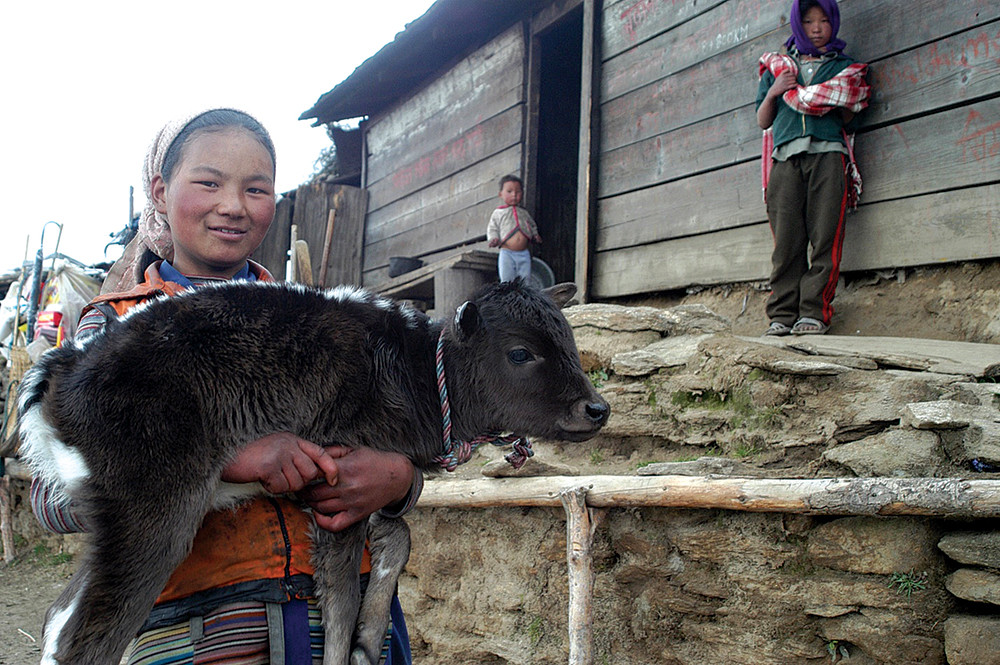.jpg)
The Nepal government’s ambitious goal of 100% renewable energy by 2045 is admirable, but does it have the required commitment to achieve this goal.
The energy sector is the largest source of greenhouse gas emissions in South Asia, posing a serious environmental and economic risk. The recent global energy crisis, exacerbated by the Ukraine conflict, has highlighted the urgency of the region’s transition to clean energy. Nepal, with its abundant renewable energy resources, such as hydropower, solar, and wind, has the potential to meet its domestic energy demands and become a net exporter of clean energy. However, this will require significant investments in infrastructure and technology. The Nepal government’s ambitious goal of 100% renewable energy by 2045 is admirable, but it will require concerted efforts from all stakeholders.
Collaboration among South Asian countries is essential to accelerate the decarbonisation of their energy sectors. This could involve sharing resources, learning from each other’s experiences, and exchanging expertise.
A diversified strategy is needed to achieve this goal. This could include:
- Investing heavily in renewable energy infrastructure, such as solar and wind farms, hydropower plants, and energy storage systems.
- Increasing energy efficiency across all sectors of the economy, including buildings, industry, and transportation.
- Phasing out coal-fired power plants and other fossil fuel-based energy generation technologies.
- Implementing efficient carbon pricing mechanisms to incentivise businesses and individuals to reduce their emissions.
While the upfront costs of these actions may be significant, the long-term benefits are clear: cleaner air, better health, reduced energy costs, and increased economic growth. Renewable energy is crucial for the development of green, secure, and affordable energy, as it can help countries build resilience to volatile prices, lower energy costs, and mitigate climate change.
Bhutan and Nepal are the only South Asian countries that currently meet their primary energy needs through renewables, although Nepal still relies heavily on imported petroleum products for transportation. The region has significant potential for renewable energy, but other countries, such as India, despite its rapidly expanding solar and wind energy markets, still rely heavily on fossil fuels.
Shifting the overall energy balance away from fossil fuels to renewable energy will require a financial and policy framework that includes phasing out coal-fired power plants, reforming energy subsidies, and implementing carbon pricing. South Asia’s energy transition is a critical endeavor, and it is one that must be undertaken with urgency. By working together, the region’s countries can create a clean energy future that benefits all.
Green Investment and the Sustainable Development Goals (SDGs)
The Sustainable Development Goals (SDGs) and green investment are intrinsically connected and mutually supportive; their link is not only fortuitous. As the name implies, green investments give top priority to programs, goods, and procedures that not only provide financial gains but also have a positive impact on the environment, so directly aiding in the attainment of the SDGs. These investments cover a wide range of important concerns, such as protecting marine habitats, conserving land, and reducing the effects of climate change.
The role that green investments play in fostering economic growth is one of the most obvious ways that they are in line with the SDGs. These investments create employment opportunities, promote economic prosperity, and help communities escape poverty. As a result, they support SDGs like No Poverty (SDG 1) and Decent Work and Economic Growth (SDG 8), which call for ending all forms of poverty by 2030. Additionally, green investments actively promote cooperation on both a local and global scale, a quality that is consistent with the SDGs’ core principles. They make it easier for international cooperation, public-private partnerships, and information sharing—all of which are essential to attaining the SDGs.
Innovations in Green Infrastructure Technology
How we design, build, and maintain sustainable urban settings is being revolutionised by advancements in green infrastructure technologies. The incorporation of smart grid technologies into our energy infrastructure is one of the most remarkable developments. These smart networks allow for effective two-way communication between energy producers and consumers, optimising energy distribution, lowering waste, and allowing for the grid integration of renewable energy sources like solar and wind. Smart networks have significant promise for improving energy availability and resilience in areas like Nepal while lowering carbon footprint.
The construction sector is also being transformed by green infrastructure technologies through the use of sustainable building techniques and materials. Construction projects are increasingly using cutting-edge materials like carbon-negative concrete, which absorbs more carbon dioxide than it generates during manufacture. Urban planning is also include green walls and roofs to reduce the impact of urban heat islands and improve energy efficiency. By constructing more livable, environmentally friendly urban areas that foster wellbeing and lessen environmental impact, these technologies help to achieve Sustainable Development Goal 11 (Sustainable Cities and Communities). With the development of technology, managing assets for green infrastructure is increasingly using artificial intelligence, blockchain, and the Internet of Things (IoT).
The Business Case for Green Infrastructure
The compelling example of Nepal’s green infrastructure project serves as a powerful illustration of how sustainable investments may change a country. The benefits to the economy of adopting green initiatives are becoming more obvious as we manage the difficulties of a fast-changing global context. With its enormous potential for the production of renewable energy, sustainable agriculture, and eco-friendly urban development, Nepal is well positioned to profit significantly from investments in green infrastructure.
In addition to the economic benefits, these expenditures might improve Nepal’s reputation as a nation that values the environment and draw money and partnership from abroad. It is impossible to overestimate the favorable environmental effects of such expenditures, notably in reducing climate change and maintaining Nepal’s spectacular natural beauty. Businesses who emphasise green infrastructure will also find themselves in a good position as customers grow more environmentally sensitive, aligning with consumer values and gaining a competitive edge. Green infrastructure investments in Nepal are essential to creating a resilient and thriving country for future generations as the country moves towards a sustainable future in Nepal is a clear example of how sustainable investments may have a positive social and economic impact.
The benefits to the economy of adopting green initiatives are becoming more obvious as we manage the difficulties of a fast-changing global context. With its enormous potential for the production of renewable energy, sustainable agriculture, and eco-friendly urban development, Nepal is well positioned to profit significantly from investments in green infrastructure.
In conclusion, the development of green infrastructure in Nepal is a necessary step towards a sustainable future. This step has far-reaching economic ramifications. Nepal’s dedication to renewable energy, sustainable agriculture, and eco-friendly urban development serves as a shining example of the transformational impact of green investments as we face the global energy crisis and environmental concerns. Adopting green projects has many financial benefits, from significant cost savings to improved international relationships and a boosted reputation as an ecologically conscious country.





